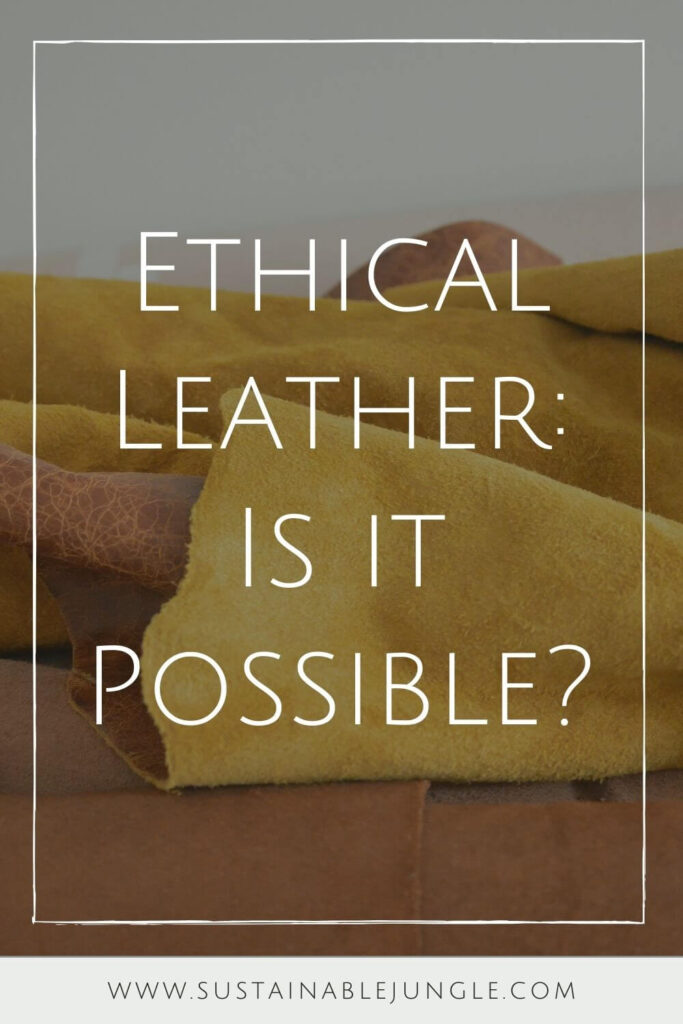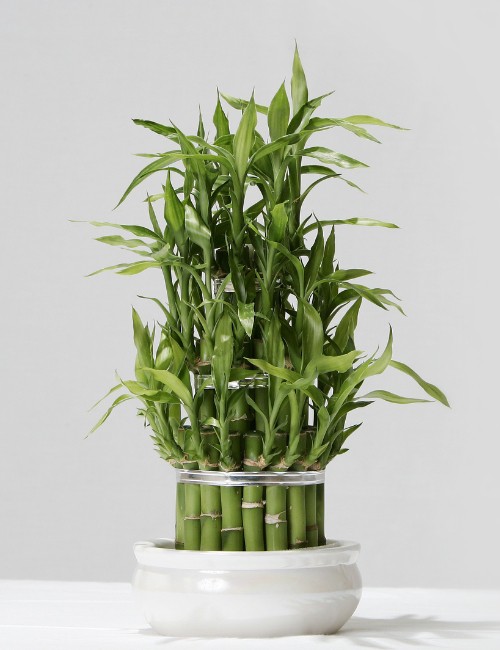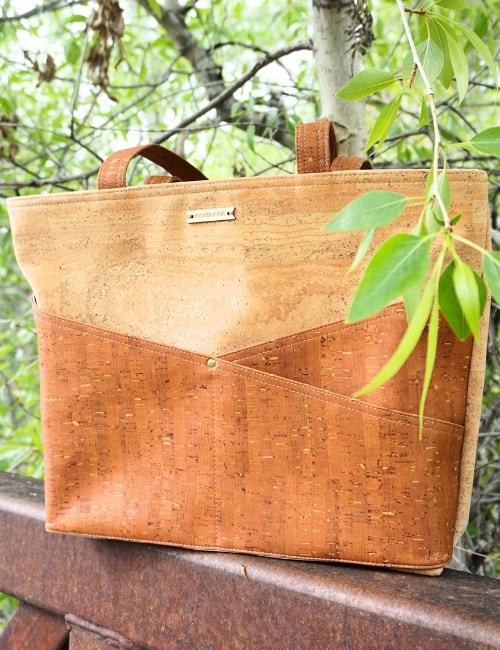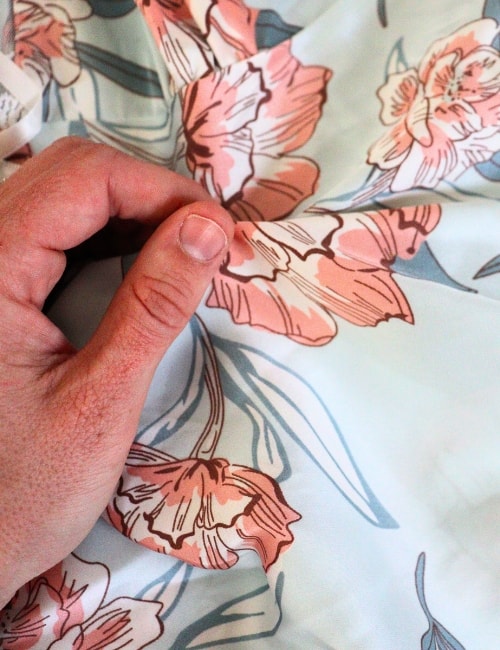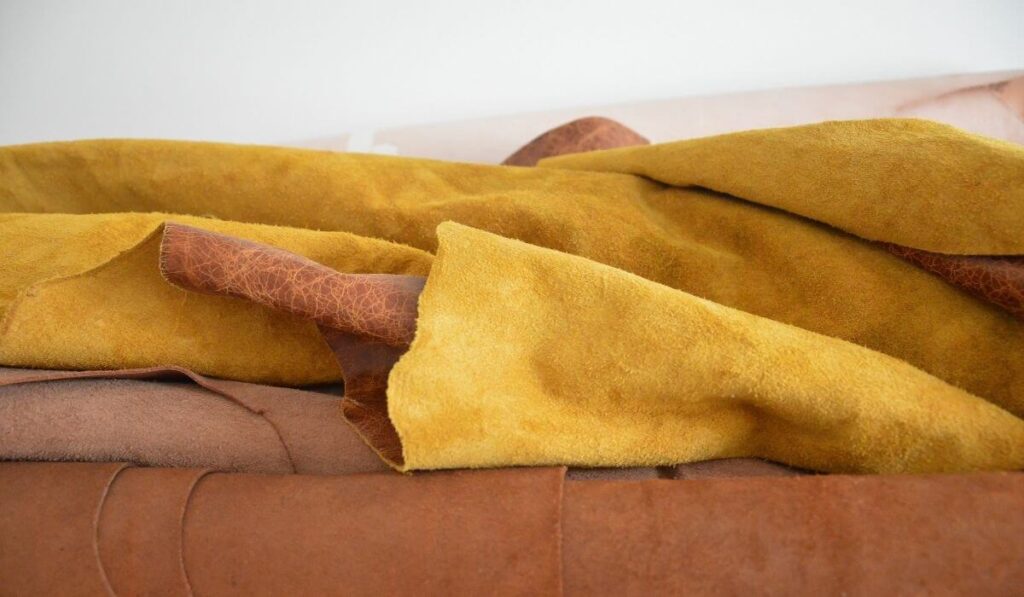
Ethical Leather: An Oxymoron Or Real Possibility?
Holy cow, is there a lot to unpack when it comes to the question of ethical leather!
It first requires us to decide whether ethical leather products are even possible.
Unlike other animal-based fabrics, like ethical wool or peace silk, sourcing leather requires a dead animal, whether the animal was killed specifically for the sake of leather or not.
Then it’s tanned using a lot of toxic chemicals, which harm waterways, ecosystems, and workers.
For these reasons and more, our opinion is that vegan leather alternatives are a moo-ch better option—though they sometimes come with their own problems.
We can’t (cow)hide from the fact that leather is still a pretty big part of sustainable and ethical fashion.
However, it is also possible to source leather shoes, bags, wallets, jackets, and the like in ways that are more defensible as “ethical” than traditional leather.
Join us as we take a look at why traditional leather is problematic, and how some brands are trying to make it better.
QUICK LINKS FOR ETHICAL LEATHER
WHAT IS LEATHER?
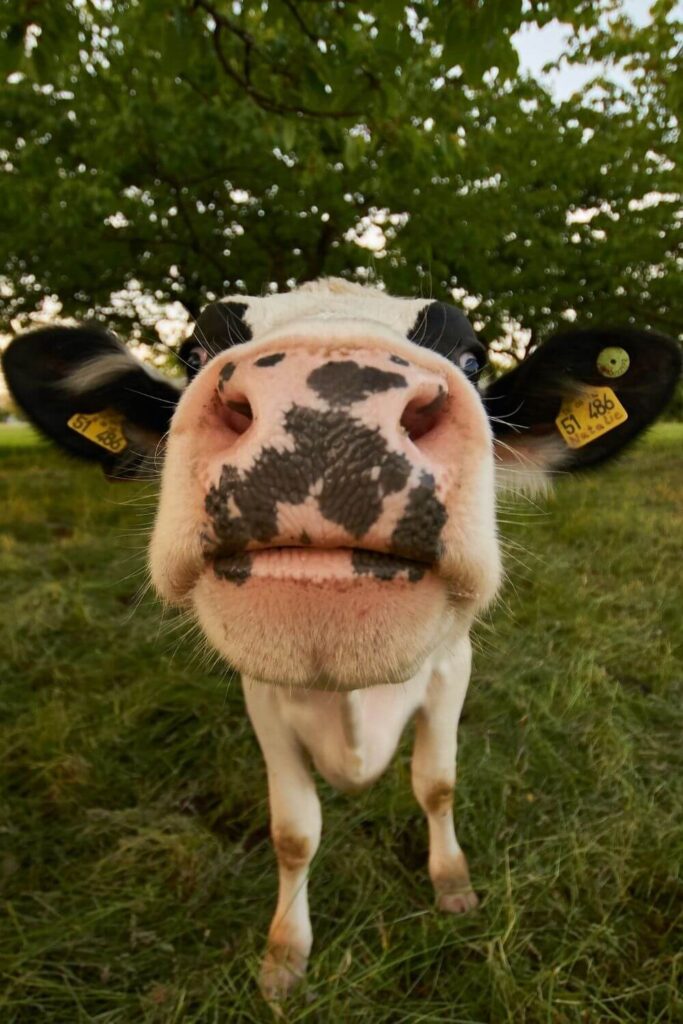
It’s durable, flexible, and commonly found in shoes, handbags, and belts—but what exactly is leather?
Leather is a fabric made from the skins or hides of animals.
Cowhide is one of the most common types of leather. However, nearly any animal can be used (snakes, lambs, sheep, kangaroos, zebras, bison, alligators, lizards, ostriches, goats, pigs, fish leather anyone?).
Different versions can be tanned and treated with different techniques, too.
For more than 7,000 years, leather has been used for a variety of items. It’s a valued material because it’s extremely tough, long-lasting, wrinkle-resistant, and able to take on different looks based on what it’s made with and how it’s processed.
For these reasons, you’ll find leather in a range of products, from furniture and bound books to clothes and shoes.
How is leather made?
To make leather, rawhide (animal skin) is obtained, meaning an animal must be killed, one way or another. Its skin is stripped and immediately salted and sorted based on color and size.
Then it undergoes a tanning process to soften the hide and improve its durability. Generally, the process follows three steps:
- The leather must be prepared for tanning and any hair removed. The leather may also be soaked in a solution or bleached.
- The actual tanning process comes next. Tanning makes the leather more supple using vegetable oils or (more commonly) chrome salts.
- A crusting process dries and softens the piece of leather.
- Afterward, it’s able to be sanded, dyed, or processed to suit the needs of whatever it’s being used for.
Chrome-tanned vs. vegetable-tanned leather
Tanning transforms a rawhide into something durable and able to last a long time. It also prevents putrefaction by keeping bacteria at bay.
While there are several tanning methods, vegetable and chrome tanning are the two most common.
Vegetable-tanned leather:
This method uses vegetable matter (leaves, tree bark, etc.) to give the leather a light brown color and produce a long-lasting, adaptable, and supple material.
Around 400 B.C., Ancient Egyptians and Sumerians developed a few methods for leather tanning, including vegetable tanning. Later on, Ancient Romans and Grecians prioritized using vegetable tanning, a process that would become very important for many uses: transportation, warfare, and industry.
For hundreds of years, this was how the world processed leather.
Chrome-tanned leather:
At the end of the 19th century, a new, faster, chemical tanning process took over. Chrome tanning makes use of chromium salts (and other chemicals).
After just a day, chrome-tanned leather is ready, and it isn’t prone to as much discoloration as vegetable-tanned leather. Hence why it remains one of the most popular methods of tanning.
WHAT ARE THE PROBLEMS WITH LEATHER?
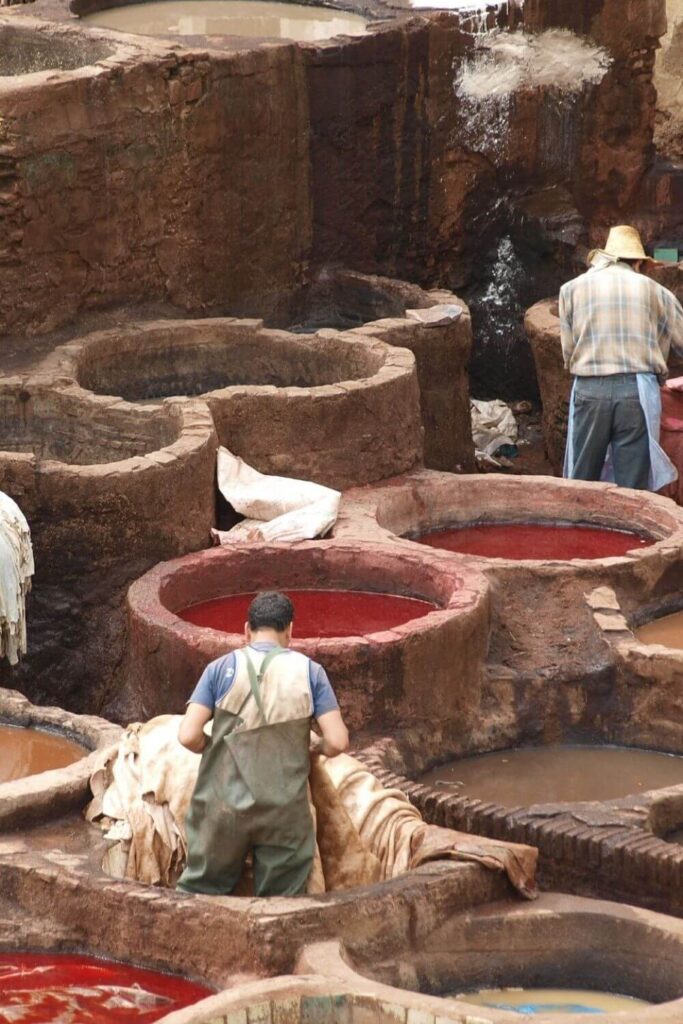
Animal welfare concerns
When it comes to answering the question, “Is leather ethical?”, there’s one big elephant (or cow) in the room: it is the skin of a dead animal.
For some, this is the deal-breaker, and for good reason.
Every year, more than one billion animals are slaughtered for hides and skins. Oftentimes, these are factory-farmed animals, which have already been exposed to horrendous conditions: crowding, deprivation, cruel treatment, confinement, and the list goes on.
This is for cowhide alone.
Other “exotic” types of leather might come with even worse histories—like stories of crocodile farms or single-family homes being packed to the brim with alligators, packed so tightly they “fill every inch of [each] room”.
But isn’t leather a byproduct of the meat industry?
While leather can be sourced exclusively as a by-product of the meat industry, there’s a significant economic incentive for raising and killing animals for their skin—making it more of a coproduct of the meat industry.
With leather consumption on the rise (and meat consumption on the decline), one might wonder if it will eventually take over as the main reason to raise and kill animals.
It makes sense given the overconsumption demanded by the modern fashion industry.
Unlike times past, a leather handbag or pair of shoes isn’t just a once-in-a-lifetime gift or something to be enjoyed and passed down through generations.
Now, leather has a pretty significant place in fast fashion, and it’s not too difficult to find cheap leather by some of the industry’s largest, biggest, and most problematic brands.
As put by The Guardian:
“The leather handbag is no longer a bag for life. To luxury fashion houses, leather goods are the rocket fuel of their huge expansion over the past decade. To high street fashion brands they represent an unrivalled cash cow. To consumers, they’re just another disposable fashion product. The fact that they are made from the skin of a beast is incidental.”
The impact of manufacturing
Without strict environmental regulation, much of the manufacturing of leather occurs in developing countries (a slow migration over the past few decades).
Unfortunately, these vulnerable workers and communities are the ones who deal with large volumes of effluent, toxic compounds that leach into nearby soils and waterways, and the industry’s significant water requirements that threaten their own water security.
Tanning just a single ton of rawhide requires around 50 cubic meters of water—or 13,208 gallons. Often, these will contain a range of polluting substances at the end of the process, too.
Of all the highly toxic raw materials used, just 20% eventually become leather. The other adhesives, cleaning solvents, and tanning chemicals (like lead and arsenic) end up polluting the environment.
The manufacturing process can be just as hazardous for workers.
China is the world’s largest producer of leather, accounting for 25% of global production. In China alone, roughly four to seven million people are involved with the leather industry.
There, benzene poisoning has been associated with several deaths in the industry. It can also cause headaches, throat and eye irritation, dizziness, and nausea, and is just one of the many volatile organic compounds (VOCs) to commonly plague leather processing facilities.
In a 2017 report that looked at the world’s second-largest producer of leather, India, several other risks were considered to affect some of the country’s 2.5 million leather workers.
There were reports of people getting trapped in machines, suffocating from toxic fumes, or even drowning in toxic tannery sludge (along with less gruesome but equally horrific cases of forced and child labor).
Tannery workers worldwide have been considered to have an increased risk of several types of cancer.
Exposed to what’s known as “leather dust,” it’s been estimated that a leather industry worker can inhale more than 40 different chemicals, including dyes, acids, and heavy metals.
The latter two are associated with increased rates for blood, bladder, respiratory, colon, lung, nasal, and rectum cancers. Heavy metals have been linked to not just cancer, either, but also organ damage and nervous system damage.
Then there are the environmental concerns of tanning…
Leather’s high environmental costs
The toxic chemicals that are bad for workers are just as bad for our planet.
Roughly 90% of leather is produced using chromium tanning, which produces carcinogenic chromium that is so toxic, many tanneries have closed in Europe and the US.
Now developing nations are instead forced to deal with chromium, effluent, and its impact on waterways.
Not only that, but raising animals for any purpose is associated with significant land overuse, water consumption, and deforestation.
Runoff from leather-producing farms can also lead to water eutrophication, where increased nitrogen levels from animal manure lead to increased algal blooms. Eventually, this depletes oxygen in the water and forms “dead zones” where animals can suffocate.
All in all, when compared to vegan leather—even petroleum-derived polyurethane (PU) leather—cow-derived leather is considered to have an environmental impact nearly three times as high.
It’s no wonder fashion lovers are wondering how to buy ethical leather.
CAN LEATHER BE ETHICAL?
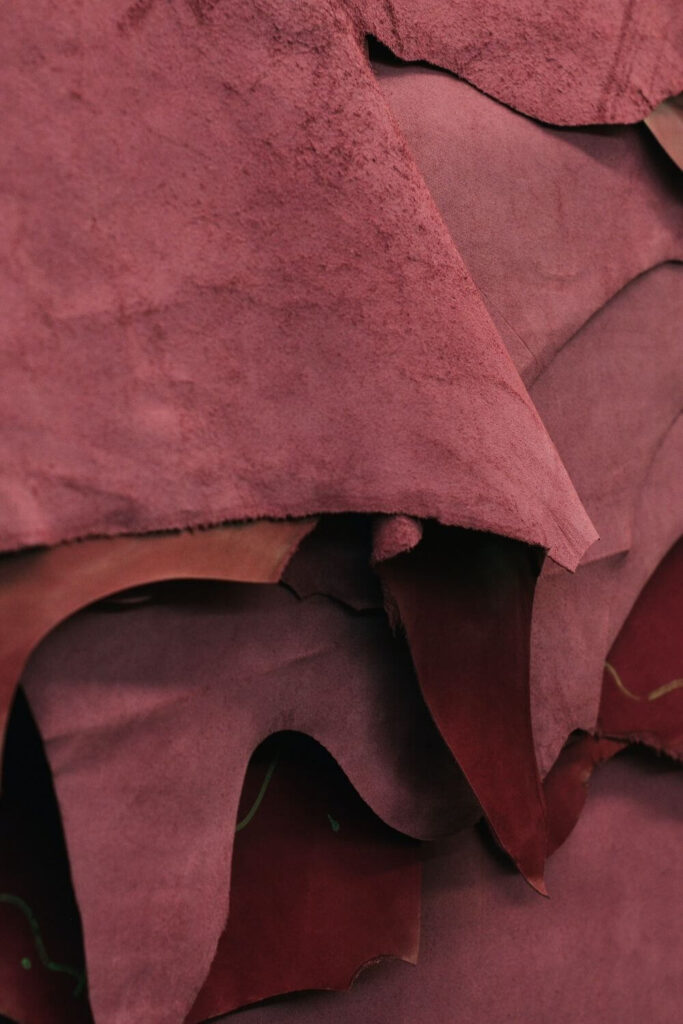
“Ethical” leather bags clearly come with a bit of baggage of their own. But should we ask leather to moo-ve over altogether?
Or is there a better way to do it?
The leather industry may be associated with significant worker hazards, but according to the UN, leather is the largest by-product industry in the world. That means putting to use byproducts from a meat industry that isn’t going away anytime soon.
Some argue leather is better than the landfill.
While global statistics are difficult to come by, this is the top reason why leather could be considered ethical under certain circumstances.
The jobs created by such a large industry are something else not to be ignored.
There are millions of people who depend on the leather industry for their livelihoods. Much like we discussed in our takeaways from Seaspiracy, it’s difficult to condemn an entire industry without considering the broader impacts.
Fortunately, for those who still appreciate the durability of leather, as well as the fact that many people rely on it, there are ways to produce it with fewer ethical concerns.
Leather Working Group-certified Leather
This multi-stakeholder initiative assesses environmental compliance of tanners and promotes sustainable practices in the leather industry.
It’s currently the only sustainable leather certification out there.
When a tannery is certified by the Leather Working Group, it demonstrates responsible practices are used with regard to chemical and water management, emissions, waste, and energy use.
There are a few tiers of ratings—Gold, Silver, Bronze. Where a company ranks on this scale depends on its final score from an audit that comprises 600 questions.
However, it is important to note that the audit does not assess how animals are treated, so LWG certified does not provide any assurance regarding animal welfare.
Nor does it convey anything about ethical practices used to support workers outside of their exposure to fewer chemicals (it does not consider fair pay for example).
Vegetable-tanned Leather
While it takes a considerably longer time, the fashion world is seeing a revitalization of vegetable tanning.
Bark, berries, roots, and leaves used in place of heavy metals still preserve the leather, but provides safer working conditions, less dangerous waste, and a leather product that is still biodegradable at the end of its life.
Recycled Leather
Recycled leather, or bonded leather, is made with scraps and other residual material from tanneries and leather manufacturers.
It can be treated with a specific type of resin before being glued together to form a fabric for new products.
Some recycled leather can be made with significant amounts of polyurethane, which we would avoid.
Instead, RecycLeather is a better option. It’s free of VOCs, uses 50% less water than conventional leather, and is made with 100% pre-consumer recycled leather as certified by the Recycled Claim Standard.
Deadstock Leather
Deadstock leather, like other deadstock fabric, means leftover scraps from manufacturers or textile mills. The leather might be damaged, have slight imperfections, or was just over-ordered.
These can be sold to fashion labels for a discounted price and keeps this precious material out of landfills.
However, there is some concern with deadstock leather. Namely, that it indirectly propels the leather industry forward and reinforces animal agriculture.
Additionally, it’s been reported that some clothing mills intentionally produce deadstock because it “opens up a market”. This means it provides a material that’s desirable for high-end designers and sustainable clothing brands.
COMPANIES THAT USE ETHICAL LEATHER
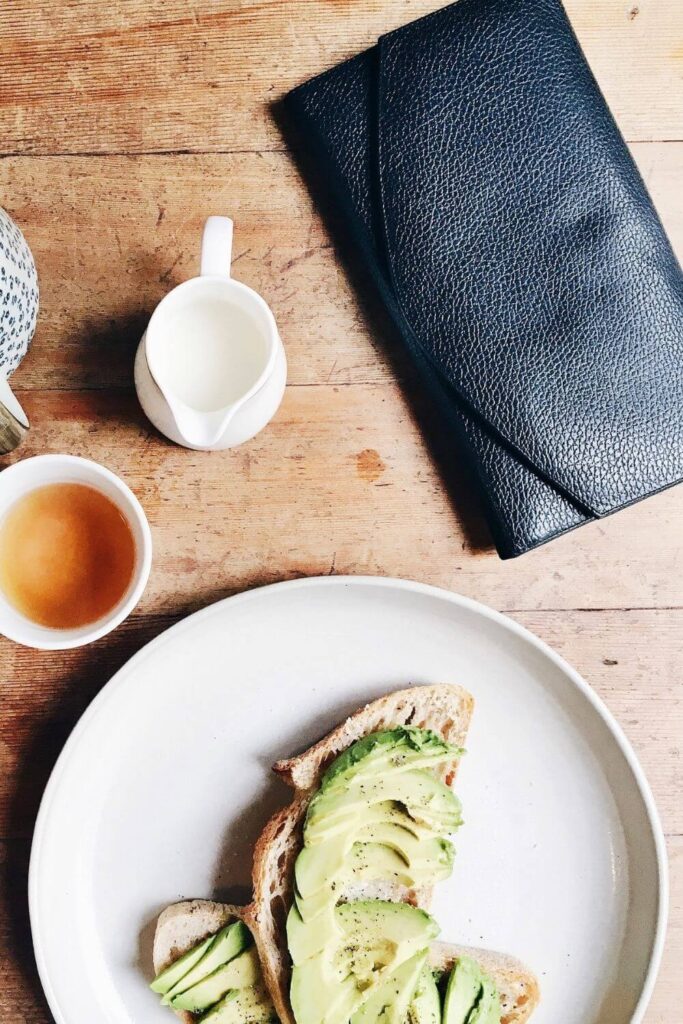
Maybe “ethical leather” isn’t the right term.
Let’s call it ‘slightly more ethical leather’, because it’s better than the alternative but still has a long way to go.
That said, vegan leather is the more sustainable fabric and the way to go for the most peace of mind.
Fortunately, we’ve already rounded up some ethical vegan leather companies in a few lists for vegan shoe brands and vegan handbags.
If you must go for animal leather, check out these articles to find out what companies use ethical leather products, while simultaneously supporting local communities:
FINAL THOUGHTS ON ETHICAL LEATHER
Finding ethically sourced leather is like trying to find a happy cow in a factory farm—almost impossible.
However, it is inspiring to see that many brands are trying to improve the leather industry, both for the animals themselves, as well as workers and the planet.
Leather likely isn’t going anywhere so supporting these brands can support a better world for all.
Next time you’re shopping with a friend and they’re ready to buy a $20 leather backpack, share this ethically sourced leather resource with them.
We need more people to question how fashion products are made and the materials used to make them.
